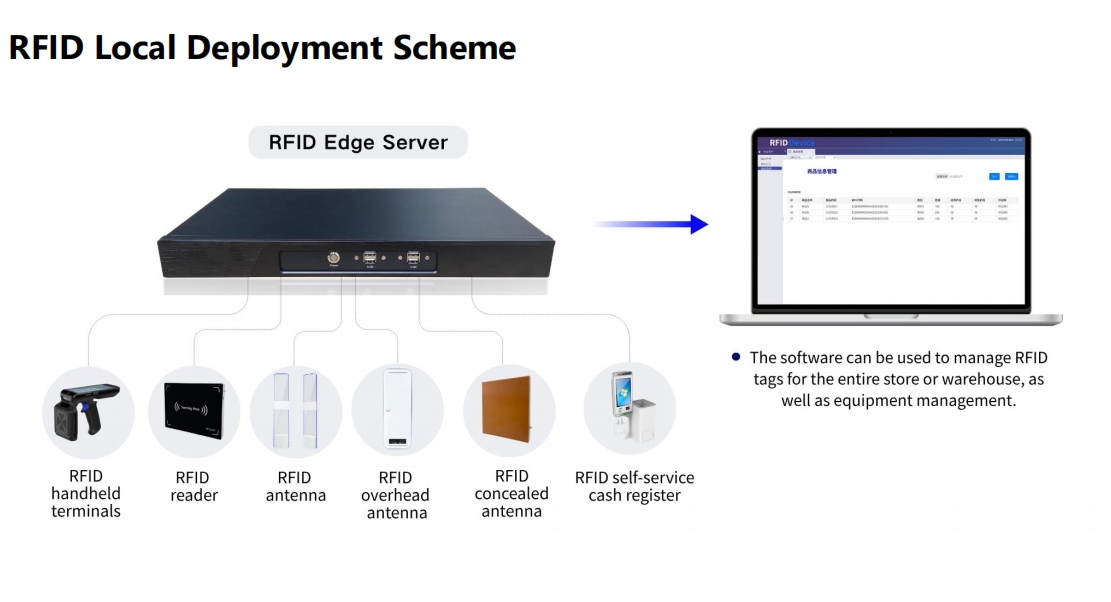Emeno | RFID Local Deployment Scheme: Building an Autonomousfor Smart Retail
2025-6-11 17:57:59
The RFID Local Deployment Scheme of Lifangmei RFID edge server achieves the full-process localization of data collection, processing and response by deeply integrating ultra-high frequency (UHF) RFID technology with edge computing. This solution is based on Lifangmei's self-developed RFID hardware devices (such as RFID anti-theft passage doors and RFID handheld devices), combined with high-performance edge servers, to form an efficient, secure and flexible Internet of Things management platform, which is suitable for diversified scenarios such as retail and warehousing. Its core value lies in reducing reliance on the cloud, enhancing response speed, safeguarding data privacy, and optimizing business management efficiency through local intelligent decision-making.
The Lifangmei RFID Local Deployment Scheme builds a three-tier architecture of "terminal-edge-cloud" centered around an edge server.
1. Terminal Layer: Comprises devices such as RFID tags, access control systems, and handheld terminals, responsible for real-time data collection of goods.
2. Edge Layer: Deploys Lifangmei's self-developed RFID edge server, enabling localized data processing and analysis. This server supports direct integration with systems like ERP and POS, eliminating the need for cloud dependency to perform tasks such as inventory counting, anti-theft alerts, and customer flow statistics—delivering response times at the millisecond level.
3. Cloud Layer: Capable of connecting to cloud servers, balancing the requirements of local real-time processing and cloud-based big data analytics.
The Lifangmei RFID Local Deployment Scheme builds a three-tier architecture of "terminal-edge-cloud" centered around an edge server.
1. Terminal Layer: Comprises devices such as RFID tags, access control systems, and handheld terminals, responsible for real-time data collection of goods.
2. Edge Layer: Deploys Lifangmei's self-developed RFID edge server, enabling localized data processing and analysis. This server supports direct integration with systems like ERP and POS, eliminating the need for cloud dependency to perform tasks such as inventory counting, anti-theft alerts, and customer flow statistics—delivering response times at the millisecond level.
3. Cloud Layer: Capable of connecting to cloud servers, balancing the requirements of local real-time processing and cloud-based big data analytics.
The Lifangmei RFID edge server solution, through technological iteration and ecological integration, is driving the Internet of Things to leap from "connection" to "intelligence", providing low-threshold and high-return digital transformation paths for various industries. Its modular design and open interface strategy have further reduced the deployment and operation and maintenance costs of enterprises, making it a key infrastructure in the era of edge computing.


 +86 13688916156(WeChat)
+86 13688916156(WeChat) Email: sales@lifmei.com
Email: sales@lifmei.com Region/Language
Region/Language







